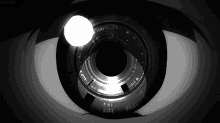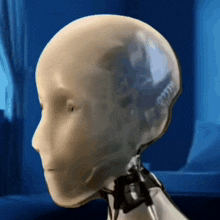
Opening — Between Circuits and Code
The dorm room was dimly lit by two different glows.
On one desk, a student hunched over a breadboard, wires tangled like veins, a tiny LED blinking to life after hours of trial and error. On the other desk, another student stared at a laptop screen, lines of code scrolling endlessly until a simple “Hello, World” appeared in perfect clarity.
Both were studying computer science. Both were chasing the same dream of innovation. Yet one was shaping the physical world through circuits, while the other was building invisible logic through code. In that moment, the contrast was clear: computer science is not a single road, but a crossroads — and the path you choose will shape the kind of creator you become.

Path 1: The Electronics Practitioner
This path leans toward electrical and computer engineering. Practitioners focus on how computing integrates with physical devices. They design, test, and optimize hardware systems, often blending coding with circuitry.
Key skills:
- Microcontrollers and embedded systems (Arduino, Raspberry Pi).
- Hardware-software integration.
- Signal processing and IoT (Internet of Things).
- Robotics and automation.
Example:
- Engineers at Tesla who design the electronic control units that manage everything from battery performance to autopilot sensors.
- A student building a smart home system using Raspberry Pi — turning theory into tangible innovation.

Path 2: The Software Engineer
This path focuses on designing and maintaining software systems. Software engineers don’t just write code; they architect solutions, manage complexity, and ensure scalability.
Key skills:
- Programming languages (Python, Java, C++).
- Software architecture and design patterns.
- Testing, debugging, and maintenance.
- Project management and agile methodologies.
Example:
- Developers at Google who build search algorithms capable of handling billions of queries daily.
- A startup founder creating a mobile app that connects local farmers directly with consumers, reducing middlemen and increasing income.
Realistic Example — Everyday Technology
Think about your smartphone.
- The electronics practitioner is the one who designed the sensors that detect your fingerprint, the circuits that manage battery life, and the chips that process your photos.
- The software engineer is the one who built the operating system, the apps you tap every day, and the algorithms that make your camera automatically adjust to low light.
Both roles are invisible to the average user, yet both are essential. Without the hardware, the software has no body. Without the software, the hardware has no soul.
When the Two Worlds Meet
The most exciting innovations often happen at the intersection of hardware and software:
- Smart homes — Devices like Alexa or Google Home combine microphones, sensors, and chips (hardware) with natural language processing and AI (software).
- Medical and Robotical devices — Pacemakers rely on precise electronics, but also on embedded software that keeps the rhythm of life steady.
- Electric cars — Tesla’s autopilot is as much about sensors and circuits as it is about machine learning algorithms.
Inspirational Innovators from Computer Science
- Larry Page & Sergey Brin (Google) — Stanford computer science students who turned a research project into the world’s most powerful search engine.
- Mark Zuckerberg (Meta/Facebook) — Built Facebook from a Harvard dorm room, reshaping global social interaction.
- Linus Torvalds (Linux Kernel) — Created Linux, the open-source system that powers servers, Android, and supercomputers.
- Tim Berners-Lee (World Wide Web) — Invented the web itself, laying the foundation for the modern internet.
- Onno W. Purbo (Indonesia) — Pioneered affordable internet access and open-source advocacy in Indonesia, proving that computer science can serve society, not just business.
Young Innovators of Today
- Evan Spiegel (Snapchat) — Co-founded Snapchat while still at Stanford, creating a platform that redefined how young people communicate through disappearing messages and AR filters.
- Nadiem Makarim (Gojek, Indonesia) — Though his formal background is in business, his vision was deeply rooted in leveraging software and mobile platforms. Gojek grew from a small ride-hailing app into a decacorn super-app, transforming how millions of Indonesians access transport, payments, and services.
- Ryan Gondokusumo (Sribu & Sribulancer, Indonesia) — A young entrepreneur who built platforms connecting freelancers with clients, showing how digital ecosystems can empower creative workers.
These figures prove that the new generation of innovators doesn’t just inherit the legacy of computer science — they expand it into new territories, blending creativity, technology, and social impact.

Closing Reflection
“Computer science is not just about machines or code — it’s about the mindset to shape the future with whichever tools you choose.”
From the blinking LED on a breadboard to the algorithms that connect billions, the journey of computer science is vast and varied. Whether you choose to be an electronics practitioner, a software engineer, or both, the essence remains the same: to solve problems, create value, and push the boundaries of what technology can do.
